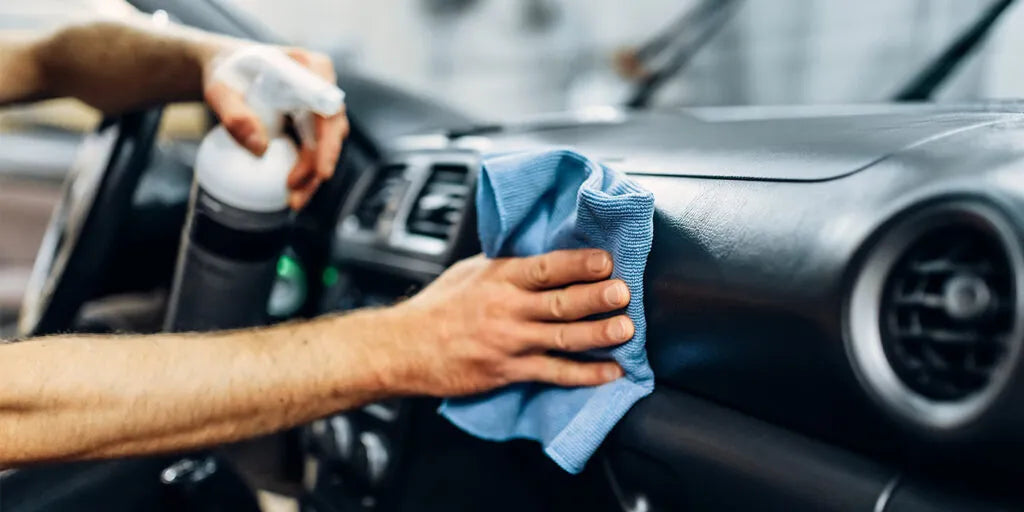
Car Interior Cleaners
1. Introduction
1.1 The Importance of a Pristine Vehicle Interior
A well-maintained car interior transcends simple aesthetics. It is an environment—a mobile sanctuary where cleanliness cultivates calm. As more time is spent commuting, road-tripping, or simply idling in traffic, the condition of a vehicle’s cabin becomes a subtle yet significant influence on daily mood and wellbeing.
1.2 First Impressions and Lasting Comfort
Beyond personal satisfaction, the interior of a vehicle speaks volumes to passengers. Smudged glass, lingering odors, and dust-laden vents form quiet judgments. A clean interior is an unspoken statement of self-respect and attentiveness.
2. Understanding Interior Contaminants
2.1 Common Sources of Interior Grime
From muddy shoes to greasy fingerprints, a car's interior plays host to a litany of unwelcome guests. Food particles lodge between seats. Pet dander clings to upholstery. Atmospheric pollutants seep in through open windows.
2.2 The Hidden Dangers of Bacteria and Allergens
Microorganisms thrive in warm, enclosed spaces. Steering wheels and gear shifts can harbor more bacteria than a toilet seat. Pollen, dust mites, and mold spores exacerbate allergies and respiratory discomfort, especially in high-humidity climates.
3. Types of Car Interior Cleaners
3.1 All-Purpose Interior Cleaners
Designed for versatility, these cleaners address multiple surfaces—vinyl, plastic, fabric—with a single application. They’re ideal for quick refreshes but may lack the potency for deeply ingrained dirt.
3.2 Upholstery Cleaners
Tailored for cloth surfaces, these penetrate fabric fibers to lift out stains and embedded debris. Foam-based versions prevent oversaturation, reducing drying time and mold risk.
3.3 Leather Conditioners and Cleaners
Leather demands reverence. Specialized cleaners remove grime without stripping natural oils, while conditioners restore suppleness and luster. Neglect results in cracking and discoloration.
3.4 Glass and Screen Cleaners
These streak-free formulas are designed to be gentle on sensitive materials like touchscreens and infotainment panels while still cutting through smudges, dust, and haze.
3.5 Carpet and Mat Shampoos
Heavy-duty formulations combat entrenched mud, spills, and foot-traffic grime. Many include deodorizers to neutralize odors from damp shoes or spilt beverages.
3.6 Dashboard and Plastic Surface Cleaners
Heat-resistant and UV-protective, these products prevent cracking and fading in high-sunlight areas. Silicone-free options avoid the greasy sheen that attracts more dust.
4. Ingredients Matter
4.1 Eco-Friendly Formulas
Biodegradable, plant-based compounds appeal to environmentally conscious consumers. These cleaners are typically gentler on both materials and skin.
4.2 Harsh Chemicals to Avoid
Ammonia, bleach, and overly acidic agents may degrade surfaces over time. They pose inhalation risks, particularly in enclosed vehicle cabins.
4.3 Fragrance vs. Fragrance-Free
Some drivers prefer the synthetic freshness of citrus or linen scents. Others opt for neutral formulations to avoid overpowering perfumes or allergic reactions.
5. Selecting the Right Product
5.1 Matching Cleaners to Materials
Each surface in a car requires a nuanced approach. Using glass cleaner on leather or carpet shampoo on dashboards invites damage or residue.
5.2 Compatibility with Vehicle Surfaces
Always consult the owner’s manual and test cleaners on inconspicuous areas. Some finishes, especially in luxury cars, are notoriously sensitive.
5.3 Performance vs. Price
Budget-friendly options may suffice for basic upkeep, but premium formulations often contain higher-grade surfactants and conditioners, ensuring longer-lasting results.
6. Application Techniques
6.1 Tools of the Trade: Brushes, Microfiber Cloths, and Steamers
Each tool offers distinct advantages. Microfiber traps dust without scratching. Detailing brushes reach into vents and crevices. Steamers sanitize without chemicals.
6.2 The Art of Layered Cleaning
Begin with dry methods—vacuuming and brushing—before introducing liquids. This reduces streaks and prevents the creation of muddy slurries.
6.3 Avoiding Over-Saturation and Damage
Less is often more. Oversaturating fabrics leads to mildew, while pooling liquid on plastic may seep into electronics. Controlled application ensures both efficacy and preservation.
7. DIY vs. Professional Cleaning
7.1 Pros and Cons of At-Home Cleaning
DIY methods offer convenience and cost savings, but may lack the tools or precision of professional services. Improper techniques can worsen stains or damage surfaces.
7.2 When to Call in the Pros
For severe stains, biohazard spills, or vehicles with high-end interiors, a professional detailer ensures meticulous restoration. Their expertise extends to ozone treatments, steam extraction, and odor neutralization.
8. Maintenance and Frequency
8.1 Creating a Cleaning Schedule
Regularity is key. Light weekly cleanings prevent buildup, while monthly deep-cleans address more stubborn accumulations.
8.2 Seasonal Deep Cleans
Transitioning between winter slush and summer dust necessitates thorough interventions. Salt stains, pollen, and moisture require targeted seasonal attention.
9. Innovative Technologies in Interior Cleaning
9.1 Nanotechnology-Based Cleaners
These futuristic formulations bond on a molecular level, forming invisible layers that repel dirt and resist wear. Ideal for high-touch surfaces.
9.2 Enzymatic Cleaners and Their Benefits
Natural enzymes digest organic material—like food, vomit, and pet waste—at the source. Unlike synthetic deodorizers, they eradicate, not mask, odors.
9.3 Antimicrobial Coatings
Applied post-cleaning, these coatings inhibit the growth of bacteria and mold for extended periods. Particularly valuable for ride-share drivers or family vehicles.
10. Conclusion
10.1 The Long-Term Benefits of Consistent Interior Care
A clean interior preserves resale value, promotes health, and enhances driving pleasure. It reflects discipline and pride, both in oneself and one's vehicle.
10.2 Cleanliness as an Extension of Automotive Pride
Beyond function, it is form. A well-kept interior communicates attention to detail—a harmony between machine and its steward. It is, ultimately, an act of reverence.
